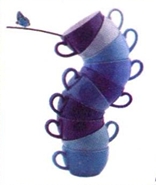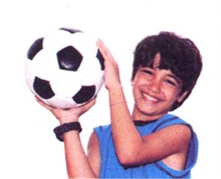练习1 分角色朗读课文 Role-play the dialogs.
Exercises 2. 根据课文内容回答问题 Answer the questions based on the dialogs.
- 什么时候去北京旅游最好?为什么?
Shénme shíhou qù Běijīng lǚyóu zuì hǎo? Wèi shénme? - 他们下午要做什么?Tāmen xiàwǔ yào zuò shénme?
- 他们想什么时候去买椅子?Tāmen xiǎng shénme shíhou qù mǎi yǐzi?
- 花花在哪儿?Huāhua zài nǎr?
- 花花多大了?Huāhua duō dà le?
3 用本课新学的语言点和词语描述图片
Describe the pictures using the newly – learned language points and words.

Wǒ yào qù mǎi ____ gè xīn bēizi.
我 要 去 买____个新杯子。

Nǐ ____ mǎi yīfu, qù nàge shāngdiàn ba.
你____买衣服,去那个 商店 吧。

Wǒ de māo sān suì ____ le,
我的猫三岁____了,
nǐ de māo duō dà le?
你的猫多大了?

Wǒ bù xiǎng xuéxí, wǒ xiǎng hé péngyou qù ____。
我不想学习,我想和朋友去____。
(1)中重格式 “Medium – stressed + Stressed” Structure
大多数双音节词属中重格式,第二个音节为重音,音长较长。例如:
Most disyllabic words fall into this type of structure, with the second syllable stressed and lasting longer. For example:
- bīngxiāng
冰箱 - bāng máng
帮忙 - dǎrǎo
打扰 - gāoxìng
高兴 - lǚyóu
旅游 - kěnéng
可能 - kāishǐ
开始 - kǎo shì
考试
(2)重轻格式 “Stressed + Light” Structure
少数双音节词是 “重轻” 格式,第一个音节为重音,音长较长;第二个音节为轻音,音长较短。例如:
A small number of disyllabic words belong to this type, in which the first syllable is stressed and long and the second is light and short. For example:
- dōngxi
东西 - chuānghu
窗户 - luóbo
萝卜 - shíhou
时候 - zhěntou
枕头 - nǐmen
你们 - gàosu
告诉 - gùshi
故事
汉字 Characters
1 汉字的笔画 (7) :𠃌、㇈
Strokes of Chinese Characters (7):𠃌, ㇈
| 笔画名称 Stroke | 运笔方向 Direction | 例字 Example Characters |
|---|---|---|
| 横折提 héngzhétí Horizontal-Turning-Rising |
 |
话 huà word,talk 说 shuō to say, to speak |
| 横折折折钩 héngzhézhézhégōu Horizontal-Triple-Turning-Hook |
 |
奶 nǎi milk 场 chǎng field, venue |
2 认识独体字 Single-Component Characters
(1)“为”,繁体 (爲) 字形像一只手牵着象,让它为人们干活的样子。本义是“做”。
The complex form of “为”(wéi), 爲, looks like a hand pulling an elephant for work. It originally meant “to work”.

(2)“也”,字形像头尖、身长的蛇,后来随着字形的演变,本义就丢失了,现在虚化为副词。
The ancient form of “也” looks like a long snake with a pointed head. As the form of the character evolves, it has lost the original meaning and become an adverb.

3 汉字偏旁 “王” 和 “⻊” Chinese Radicals: “王” and “⻊”
| 偏旁 Radical |
解释 Explanation |
例字 Example Characters |
|---|---|---|
| 王 | 王字旁,也叫斜玉旁,一般和玉有关系。 The radical “王” is sometimes called the “slanting jade” radical. It is usually related to jade. |
现 xiàn now, present 球 qiú ball |
| ⻊ | 足字旁,一般和脚有关系。 The radical “⻊” is usually related to one’s feet. |
跑 pǎo to run 踢 tī to kick |
运用 Application
1 双人活动 Pair Work
两人一组,询问对方的喜好和习惯,互相了解对方。
Work in pairs. Ask about your partner’s likes and habits and get to know each other.
例如:A: Nǐ zuì xǐhuan chī shénme? Zuì bù xǐhuan chī shénme?
例如:A: 你最喜欢吃什么?最不喜欢吃什么?
A: Wǒ zuì……
A: 我最……
B: ……
A: Nǐ zuì xǐhuan shénme yùndòng?
A: 你最喜欢什么运动?
B: ……
B: ……
Wǒ de péngyou ,tā zuì xǐhuan ,zuì bù xǐhuan
我的朋友____ ,他最喜欢_____ ,最不喜欢_____ 。
2 小组活动 Group Work
3 – 4人一组,互相询问并记录朋友最想和最不想去旅游的地方以及原因,每组请一位同学报告情况。
Work in groups of 3 – 4. Ask your group members about the places they want to travel the most and the least respectively, ask the reasons why and take notes. Each group chooses one member to make a report.
例如:A: 你最想去什么地方旅游?
Nǐ zuì xiǎng qù shénme dìfang lǚyóu?
B: 我最……
Wǒ zuì……
A: 为什么?
Wèi shénme?
B: ……
A: 你最不想去什么地方旅游?为什么?
Nǐ zuì bù xiǎng qù shénme dìfang lǚyóu? Wèi shénme?
B: ……
| 姓名 Name |
最想/最不想去的地方 Place Most/Least Attractive |
原因(yuányīn) Reason |
|---|---|---|
| 小王 Xiǎo Wáng |
最想去北京 zuì xiǎng qù Běijīng |
他想学汉语,想吃中国菜。 Tā xiǎng xué Hànyǔ, xiǎng chī Zhōngguó cài. |

Comments